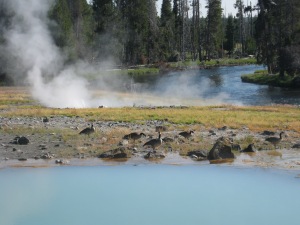What if I said that much, if not most, of the scientific or technical stuff you “know” is really based on faith that what you once read or heard is true?
“When you add technical jargon into the mix of subjective data interpretation and gifted creative writing, you get an elite class of self-proclaimed experts that have created their own special language so that others will have difficulty challenging their ideas. The common laypeople are steamrolled by the sheer magnitude of technical details and intimidated by the apparent authenticity.” DJ Minteer
I Say Tomato, You say Tamoto
Interpretations can differ over the very same observations and data. Regardless of the scientific, engineering or other technical field, the differences of opinion are often over controversial experimental and measurement errors, faulty assumptions and/or unrealistic estimates.
 Every experiment and measurement has error. Most research also includes assumptions and estimates of unknown (and sometimes unverifiable) conditions. As a result, scientists, engineers and other technicians have to attempt to estimate and report the effects of these uncertainties on the final conclusions. So while a theory may be well supported by experimental repeatability, the associated data supporting the conclusions is only repeatable within some margin of error (which includes the experiment and measure errors, assumptions and estimates).
Every experiment and measurement has error. Most research also includes assumptions and estimates of unknown (and sometimes unverifiable) conditions. As a result, scientists, engineers and other technicians have to attempt to estimate and report the effects of these uncertainties on the final conclusions. So while a theory may be well supported by experimental repeatability, the associated data supporting the conclusions is only repeatable within some margin of error (which includes the experiment and measure errors, assumptions and estimates).
Margins of error are always open to debate, even though statistical methods may be used to try and make sense of the significance of the uncertainties. When there are differing opinions on popular theories it’s not always the scientific or technical methods that are questioned, but quite often the experimental and investigative uncertainties.
Spin That Record
Even with differing honest interpretations of data and the associated uncertainties, it’s still possible to spin the conclusions to support your own viewpoint. So now there is another added possibility – the agenda twist. Sounds like a dance…well, it is actually. After twenty two years of experience with technical writing in the engineering fields, I can attest to the fact that many not-so-great ideas can be made to appear well-supported by technical references, calculations and other records with nothing more that clever penmanship and data filtering. Is that good science or engineering? No! But it happens.
Depending on how much bias the researcher may or may not have, along with the significance of the assumptions and experimental errors themselves, the uncertainties in the final conclusions are either highlighted for all to see (if they are considered insignificant), or downplayed and put in an obscure appendix in the back of the report (or not even mentioned).
And when you add technical jargon into the mix of subjective data interpretation and gifted creative writing, you get an elite class of self-proclaimed experts that have created their own special language so that others will have difficulty challenging their ideas. The common laypeople are steamrolled by the sheer magnitude of technical details and intimidated by the apparent authenticity. This really happens, and on an unbelievable scale!
Let It Go Viral!
Opinions and misinformation have never before had the potential to reach such a wide audience as they do today with the internet. The old school methods of publishing, especially scientific or engineering data and reports, was that it had to meet industry standards for accuracy and peer reviews before it could be published. But today this step can be bypassed, and on a grand scale (though usually not by true scientists/engineers) thanks largely to the internet and, more recently, independent publishers and a variety of self-publishing methods.
 As never before seen in the history of mankind, today anyone is able to self-publish an idea and immediately make it available to a very large world population via the internet, and have the potential for that piece of information to go “viral” (viewed by millions and millions of people in a short period of time). That can be a great thing! But misinformation abounds.
As never before seen in the history of mankind, today anyone is able to self-publish an idea and immediately make it available to a very large world population via the internet, and have the potential for that piece of information to go “viral” (viewed by millions and millions of people in a short period of time). That can be a great thing! But misinformation abounds.
Whether mad scientist or phony philosopher or Joe-with-an-agenda, nothing precludes them from publishing material in the mainstream without any scrutiny over the content or bases for the conclusions. Sure, readers can disagree and negatively comment and otherwise attempt to discredit it, but that has no real effect and in fact can actually help increase popularity.
At its worst, data spinning gone viral is an excellent brainwashing technique. Joseph Goebbels (Reich Minister of Propaganda in Nazi Germany from 1933 to 1945) is credited with saying “If you tell a lie big enough and keep repeating it, people will eventually come to believe it.”
Pass the Aspirin Please
A lot of legitimate technical reports are intentionally written for the “technically minded,“ using discipline-specific terms and very technical information. Nothing wrong with that. But understand that such information is largely unverifiable by the layperson. To fully grasp what is truth and what may be creative writing requires an education beyond the average person. It also would requires pulling every string and reviewing technical details associated with usually many years of research in order to come to any kind of reasonable conclusion on our own.
The typical person cannot or will not go to this effort. Those that are not scientific or technical nerd types may be prone to taking much of the conclusions at face value without questioning the supporting data (shame on us!). After all, these are respected and well educated people telling us this stuff, right? Should us average Joes believe them?
What happens when an article written for the scientifically or technically minded is put on the internet? What if it goes viral and gets ten million views? Nothing necessarily wrong with that either. But I would highly doubt that this many website hits are due to ten million scientists reading the article. Nope, average Joes like you and me are seeing what all the fuss is about. And so then millions of us are probably not taking the time to verify all the references. Might this be dangerous if the article purposely contained misinformation?
Remember those cigarette ads that were supposedly not targeted at minors? Or, suppose an adult stands before a class of first graders, tells them that the earth is flat and gives twenty-five scientific sounding reasons why it should be accepted as fact. The kids will believe them.
Your Faith in the Truth or a Scam?
Believing something that is written or said is frequently more about the persuasiveness and popularity of the writer or speaker, and less about the ever elusive proof.
Most of what the average person knows and believes about scientific, engineering or other technical “truths” is, plain and simple, taken purely on faith because it’s usually impossible for the layperson to verify the details.
 Even though most scientists and engineer types make every effect to present truthful, unbiased information based on observable and repeatable experiments or methods, all experiments and measurements contain error and most research also contains assumptions and estimates.
Even though most scientists and engineer types make every effect to present truthful, unbiased information based on observable and repeatable experiments or methods, all experiments and measurements contain error and most research also contains assumptions and estimates.
Scientific and other technical uncertainties are sometimes downplayed and the conclusions given more weight than they deserve because biases and intentional misinformation persist in academia and nearly every other institution. We humans always seem to insert our selfish agendas in everything we touch.
Don’t believe everything you read, or it will cost you. But whatever you do don’t stop reading, or that may cost you even more!
Posted in
Experimental Uncertainties,
Scientific Method and tagged
data interpretation,
elusive proof,
experimental error,
experimental uncertainty,
mad scientist,
margin of error,
measurement error,
misinformation,
peer review,
scientific interpretation,
scientific method,
scientific observation,
scientific propaganda,
scientifically minded,
taken on faith,
technical jargon,
viral information |
 We know that throughout history there have been sightings of, and spiritual encounters with, angels, demons, spirits, ghosts, even Jesus and God. There have been healings and miracles and other types of personal experiences. Yes, there are plenty of false reports from people wanting attention. But there are a lot of credible people having experiences too. I would be the first to agree that these experiences are difficult, if not impossible, to put to the scientific test.
We know that throughout history there have been sightings of, and spiritual encounters with, angels, demons, spirits, ghosts, even Jesus and God. There have been healings and miracles and other types of personal experiences. Yes, there are plenty of false reports from people wanting attention. But there are a lot of credible people having experiences too. I would be the first to agree that these experiences are difficult, if not impossible, to put to the scientific test.








